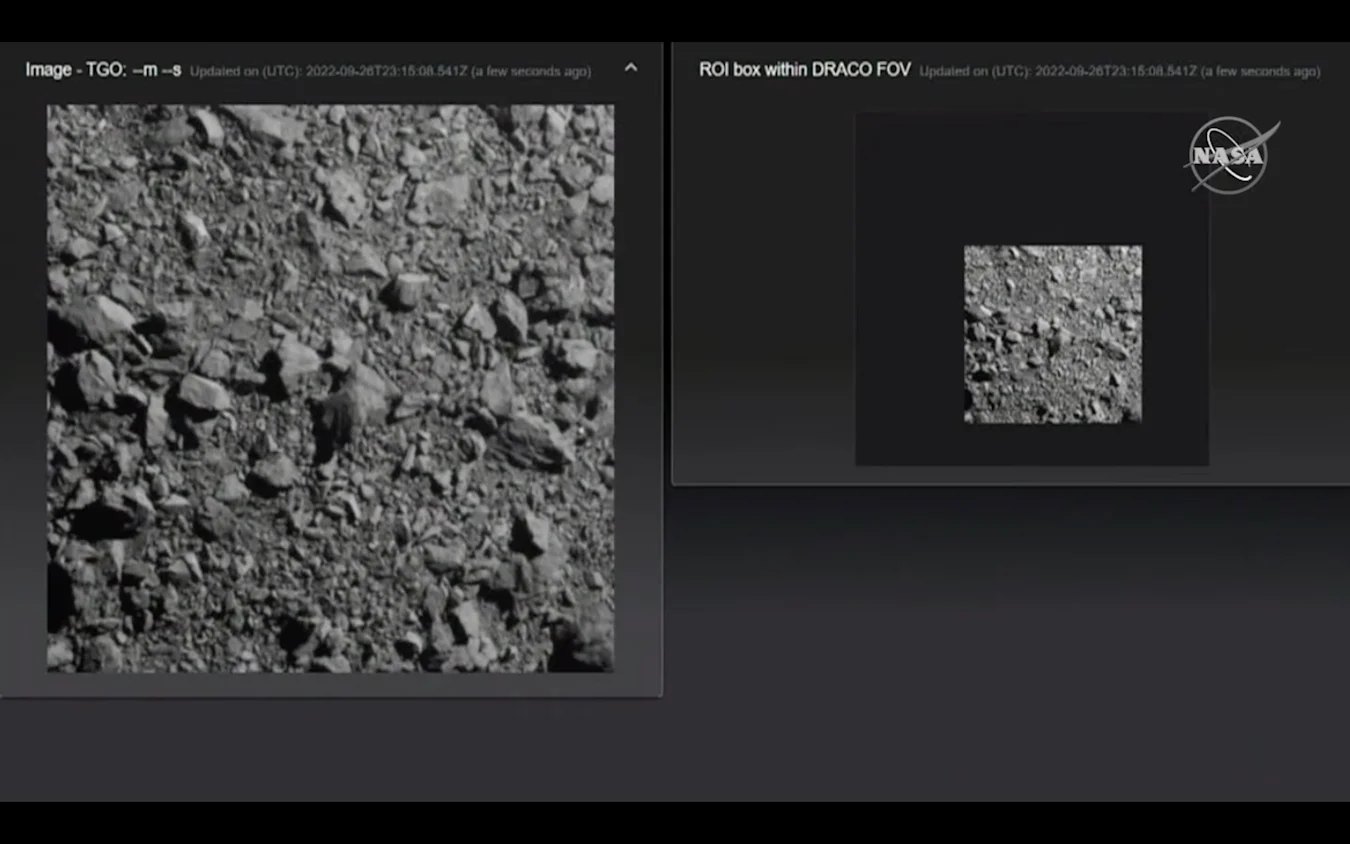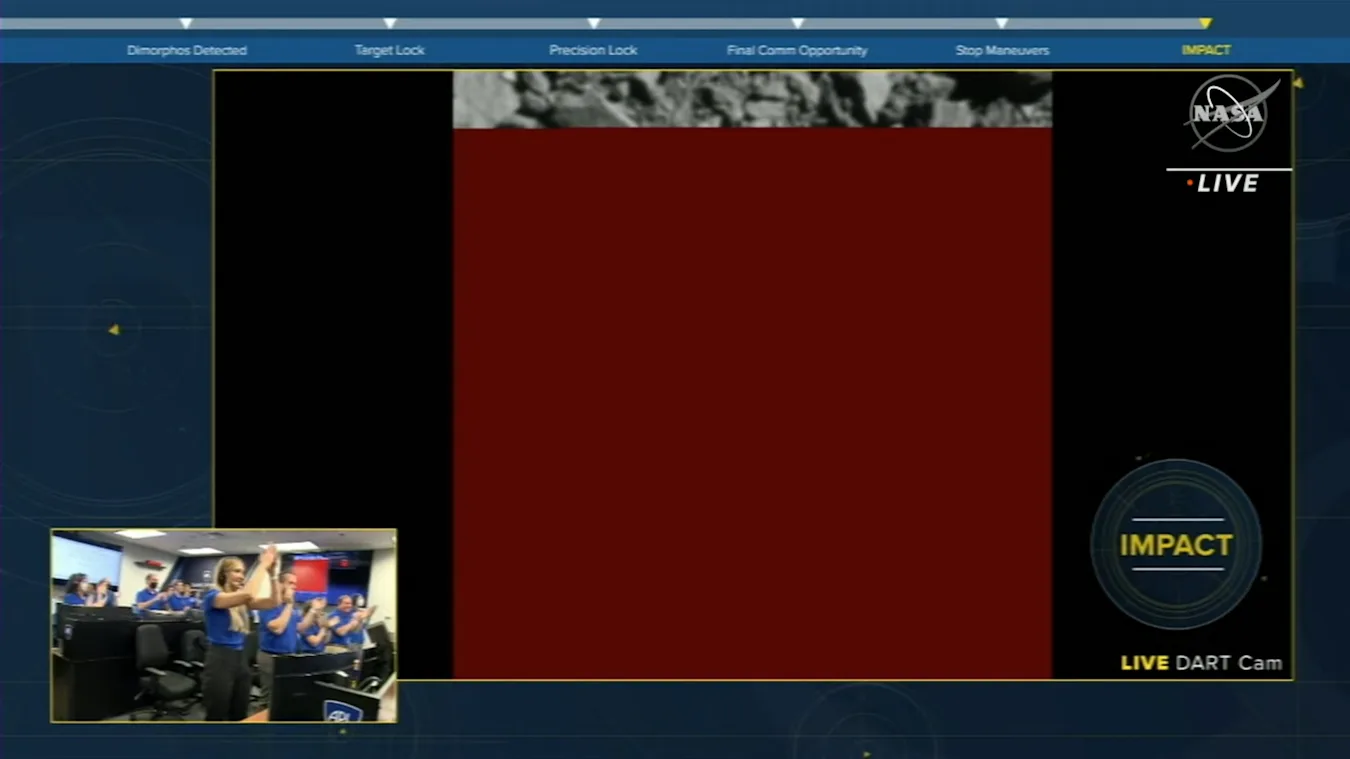After nearly a year in transit, NASA’s experimental Double Asteroid Redirection Test (DART) mission, which sought to answer the questions, “Could you potentially shove a asteroid off its planet-killing trajectory by hitting it with a specially designed satellite? How about several?” has successfully collided with the Dimorphos asteroid. Results and data from the collision are still coming in but NASA ground control confirms that the DART impact vehicle has intercepted the target asteroid. Yes, granted, Dimorphos is roughly the size of an American football stadium but space is both very large and very dark, and both asteroid and spacecraft were moving quite fast at the time.

NASA
“It’s been a successful completion of the first part of the world’s first planetary defense test,” NASA Administrator Bill Nelson said after the impact. “I believe it’s going to teach us how one day to protect our own planet from an incoming asteroid. We are showing that planetary defense is a global endeavor and it is very possible to save our planet.”
NASA launched the DART mission in November, 2021 in an effort to explore the use of defensive satellites as a means of planetary defense against Near Earth Objects. The vending machine-sized DART impactor vehicle was travelling at roughly 14,000 MPH when it fatally crossed Dimorphos’ path nearly 68 million miles away from Earth.
Whether future iterations of a planetary defense system brimming with satellites willing to go all June Bug vs Chrysler Windshield against true planet-killer asteroids remains to be seen. Dimorphos itself is the smaller of a pair of gravitationally-entangled asteroids — its parent rock is more than five times as large — but both are dwarfed by the space rock that hit Earth 66 million years ago, wiping out 75 percent of multicellular life on the planet while gouging out the Gulf of Mexico.

NASA
The DART team will likely be poring over the data generated by both the impactor and cameras released before the spacecraft made its final approach for days to come. However the team will consider shortening the orbital track of Dimorphos around Didymos by 10 minutes an ideal outcome, though any change of at least 73 seconds will still be hailed as a rousing success. The team will have to observe Dimorphos’ orbit for half a day to confirm their success, as the moonlet needs nearly 12 hours to complete an circuit around Didymos.
All products recommended by Engadget are selected by our editorial team, independent of our parent company. Some of our stories include affiliate links. If you buy something through one of these links, we may earn an affiliate commission. All prices are correct at the time of publishing.